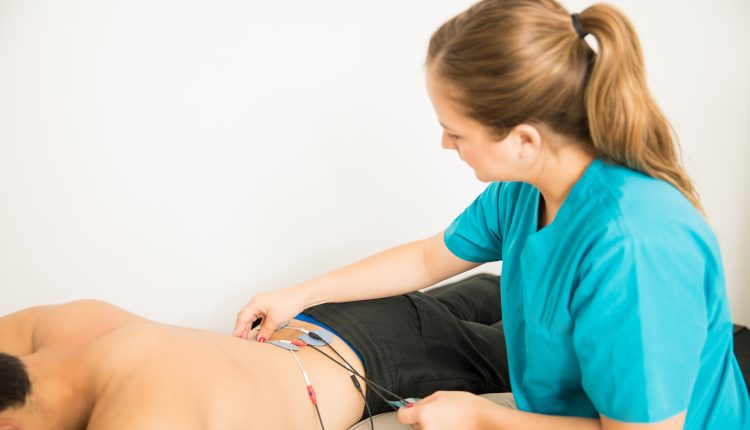Chiropractor Electrical Stimulation (E-Stim): A Comprehensive Guide to Muscle Pain Relief and Therapy

Muscle pain, injuries, and various physical conditions can significantly impact a person’s quality of life. Fortunately, chiropractors have long been utilizing electrical stimulation (E-Stim) as an effective therapy to address these issues. In this comprehensive guide, we will delve into the world of chiropractor electrical stimulation, exploring its benefits, various types, and how it can be an integral part of chiropractic care and physical therapy.
1. Understanding Electrical Stimulation Therapy:
Electrical stimulation therapy, commonly known as E-Stim, involves using electrical currents to stimulate nerves and muscles. This technique has been utilized for decades by chiropractors, physical therapists, and medical professionals to alleviate pain, promote healing, and improve muscle function.
2. How Electrical Stimulation Works:
During electrical stimulation, electrodes are placed on the skin in the targeted area of treatment. These electrodes deliver electrical impulses to the underlying muscles and nerves, causing them to contract and relax rhythmically. This process helps increase blood flow, release endorphins (natural pain relievers), and reduce inflammation, resulting in pain relief and accelerated healing.
3. Benefits of Electrical Stimulation Therapy:
Chiropractor electrical stimulation offers a range of benefits, including:
Pain Relief: E-Stim is highly effective in reducing acute and chronic pain, making it an essential part of pain management programs.
Muscle Rehabilitation: Electrical stimulation helps prevent muscle atrophy, improves muscle strength, and aids in the rehabilitation of injured muscles.
Injury Recovery: Whether it’s sports injuries, work-related injuries, or accidents, E-Stim can expedite the healing process and enhance tissue repair.
Nerve Stimulation: Electrical impulses can target specific nerves, providing relief from conditions like sciatica and neuropathy.
Blood Flow and Circulation: E-Stim boosts blood circulation, promoting faster healing and delivering vital nutrients to injured tissues.
4. Various Types of Electrical Stimulation:
Transcutaneous Electrical Nerve Stimulation (TENS): TENS units are widely used for pain relief, especially for chronic conditions. It involves high-frequency, low-intensity electrical currents to reduce pain signals to the brain.
Neuromuscular Electrical Stimulation (NMES): NMES focuses on muscle rehabilitation and strengthening by stimulating targeted muscles.
Interferential Current (IFC): IFC uses medium-frequency electrical currents to alleviate pain, improve circulation, and reduce muscle spasms.
Electrical Muscle Stimulation (EMS): EMS is aimed at muscle strengthening and toning, commonly used in physical therapy and rehabilitation programs.
5. E-Stim in Chiropractic Care:
Chiropractors incorporate electrical stimulation as part of their treatment plans to complement spinal manipulations and adjustments. By using E-Stim, chiropractors can further enhance muscle relaxation and promote optimal spinal alignment for pain relief and improved mobility.
6. Collaborative Efforts: Chiropractors and Physical Therapists:
Chiropractors often work in conjunction with physical therapists to provide comprehensive care to their patients. Together, they combine electrical stimulation therapy with other modalities such as massage therapy, Graston technique, and therapeutic exercises to achieve optimal results.
7. E-Stim for Specific Conditions:
Neck Pain and Headaches: Electrical stimulation can effectively target the neck muscles and nerves, providing relief from neck pain and tension headaches.
Sports Injuries: For athletes and professional sports enthusiasts, E-Stim plays a significant role in rehabilitating sports-related injuries and enhancing performance.
Arthritis and Joint Pain: Chiropractor electrical stimulation can help manage pain and inflammation associated with arthritis and other joint conditions.
8. Personalized Treatment Programs:
Chiropractors tailor electrical stimulation programs based on the patient’s specific needs, condition severity, and treatment goals. Each session is carefully monitored and adjusted as necessary to ensure maximum effectiveness.
Conclusion:
Chiropractor electrical stimulation (E-Stim) has proven to be a valuable and versatile therapy for pain relief, muscle rehabilitation, and overall health improvement. By harnessing the power of electrical impulses, chiropractors can offer their patients a comprehensive and personalized approach to care. Whether you’re recovering from an injury, seeking pain relief, or aiming to improve muscle strength, chiropractic care with electrical stimulation can be the key to a healthier and pain-free life.


Comments are closed.